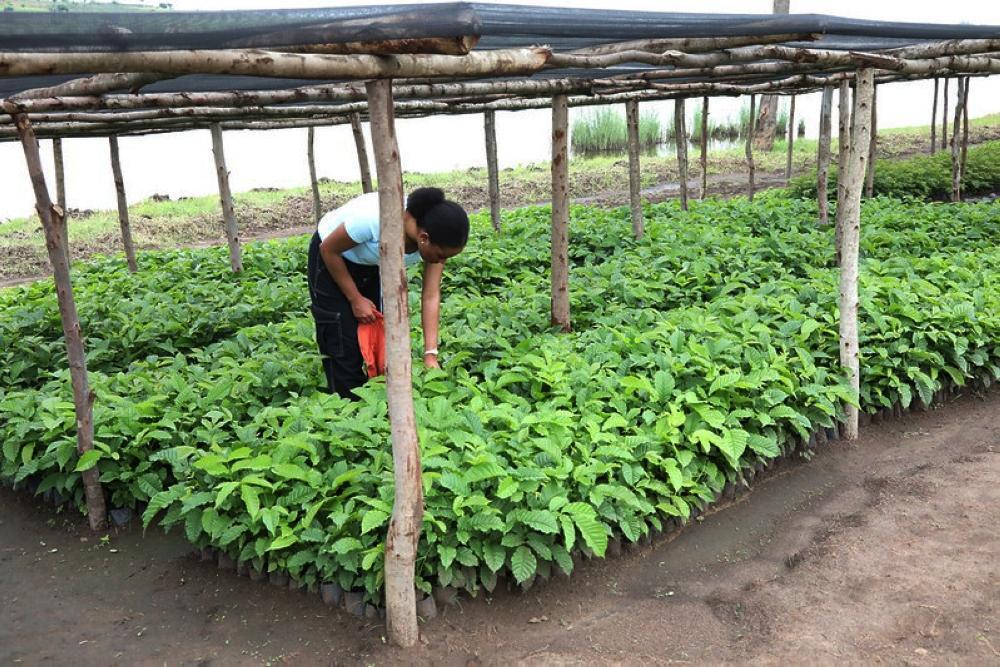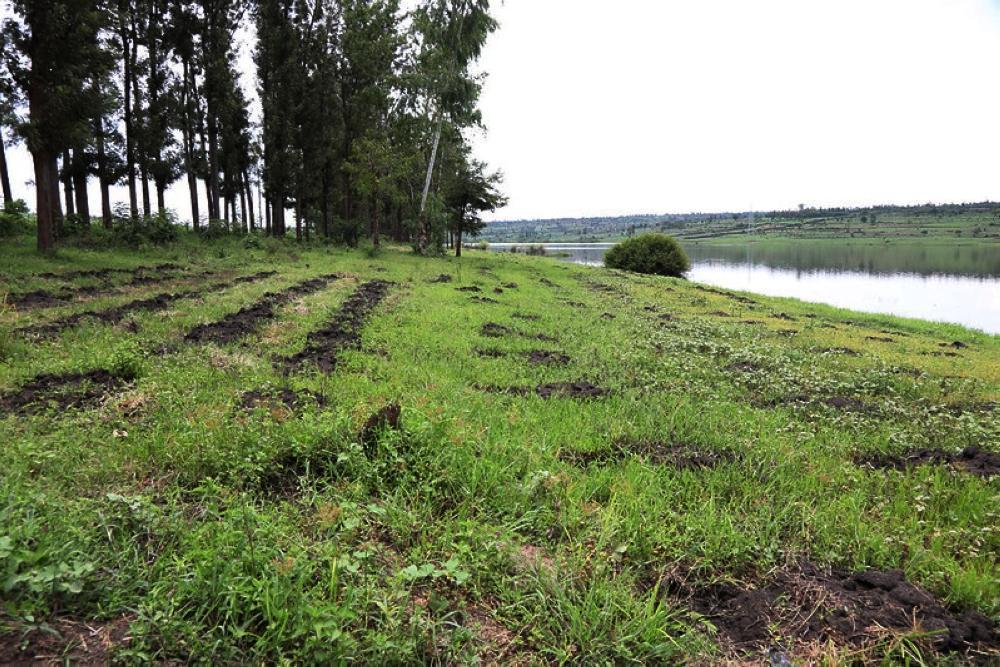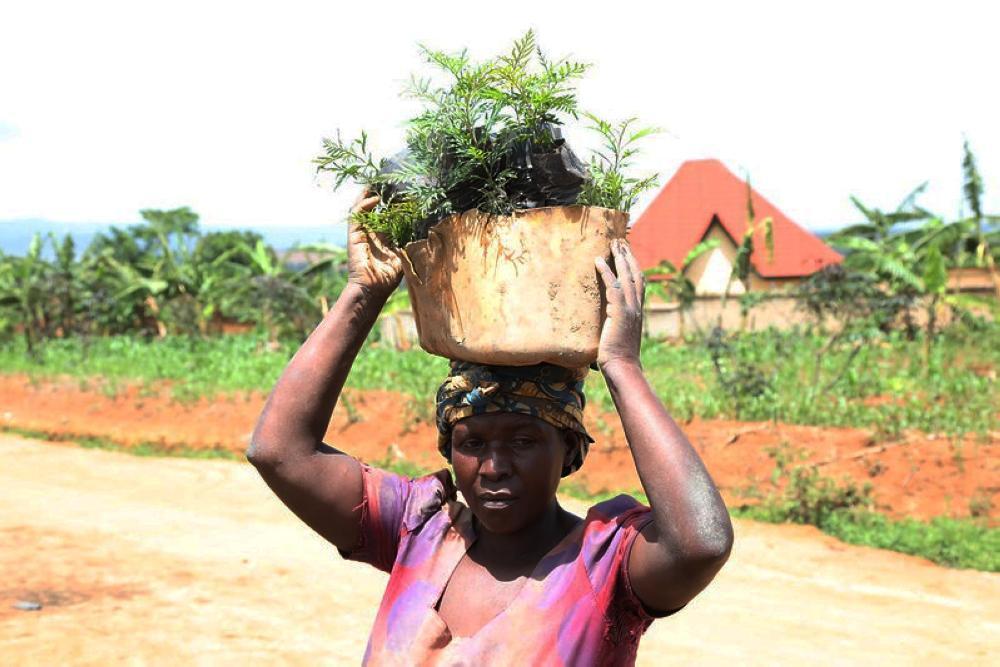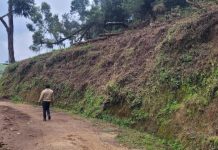Africa-Press – Rwanda. Rwandan beekeepers are optimistic about prospects of triplling honey production since the government is restoring drought-degraded ecosystems including 15 bee-forage tree species in Eastern Province, The New Times has learnt.
The restoration of degraded deforests such as those of in Eastern Province was part of discussions and negotiations during 28th UN Climate Change Conference-COP28 in UAE, Dubai which closed on December 12.
Historically, 40 or 50 years ago, Rwanda’s Eastern Province had enough forest cover. But it experienced deforestation as people cut trees in search of agricultural land, charcoal, firewood as well as construction materials, according to Rwanda Forestry Authority.
By and large, the use of chemical pesticides that are not environmentally friendly and destruction of bee habitats, are behind the decrease in production of honey in the country.
During the ongoing tree planting exercise, new seedlings have been planted on the shores of lakes to restore forest after degradation in Eastern province. COURTESY.
Eastern Province, home to three million people, has huge potential for being the country’s fruit basket, and can, besides playing a role in addressing food security, increase honey production.
The region’s honey production is low due to degraded forests and habitat destruction in addition to climate change effects. Drought decreased the food and honey produce despite the huge potential, according to Monique Nyirashuri, a female beekeeper who is also the head of Kopaki, a beekeeper’s cooperative in Kirehe District. The cooperative had the potential to harvest three tonnes of honey but only manages one tonne per year.
“Due to forest degradation, bees had no food supply. We lost many honey bee colonies across the district due to the bee forage crisis. Currently we are planting trees with flowers that serve as bee forage. Our cooperative has so far planted such tree species on one hectare and we expect the production to increase to three tonnes,” she said.
Jean Damascene Ntaganda, the head of the beekeepers’ federation in Rwanda, told The New Times that deforestation and habitat deforestation hurt national honey production in the past years.
There are 128,000 beekeepers registered in the federation while a good number of others are not registered.
A farmer carries some seedlings to be planted in Bugesera District.
“Seeking agricultural land led to deforestation and thus honey production was greatly affected. Planting different tree species and agroforestry with flowers serving as bee forage is the way to go,” he said.
Pests, diseases threaten honey production
The diseases and pests that are increasing due to climate change have also devastated some tree species that provide bee forage. This also contributed to decrease in honey production.
“These, for example, attacked Eucalyptus trees. Diseases and pests that attack maize crops triggered the use of pesticides which killed so many bees and thus reduced honey production from over 6,000 tonnes officially recorded, to 2,000 tonnes, per year,” he said.
In Nyamasheke District, for instance, the bee population decreased to such an extent that the productivity of honey decreased dramatically according to a study dubbed “Agroecology in Rwanda: status, opportunities and challenges” conducted in Gisagara, Rubavu, Gicumbi, Nyamasheke, Musanze, Bugesera, Nyaruguru and Huye Districts.
The production of honey, in one case, shifted from five tonnes per year down to 0.5 tonnes per year corresponding to a loss of 90 percent of honey production.
Ntaganda said that there is optimism that honey production could increase to over 10,000 tonnes in 2025.
According to figures from Rwanda Agriculture and Animal Resources Development Board, the current production of honey is lower compared to a demand of 17,000 tonnes per year.
Rwanda emerged as the 100th largest exporter of honey, globally, with exports worth $0.9 million in 2022. The global honey market was worth $8.17 billion in 2021 and $8.53 billion in 2022.
25,000 bee-forage trees to increase honey production
“There is a project that is planting trees in Eastern Province which will provide bee forage and we hope it will contribute to honey production increase,” he said.
Olivier Habimana, the Chief of Party of the $33.8 million Transforming Eastern Province through Adaptation project, said that they have, so far, trained 200 cooperative members on improved honey production in Gatsibo, Nyagatare, Bugesera, Ngoma, Kirehe, Kayonza, and Rwamagana Districts.
“We established both 25, 000 bee-forage trees of diverse species on at least 200 hectares, 10 honey and wax storage stations and associated storage facilities,” he said.
The project is implemented by the government in collaboration with partners such as International Union for Conservation of Nature (IUCN), and the Center for International Forestry Research and World Agroforestry (CIFOR-ICRAF). It is on course to restore 60,000 hectares of drought degraded landscapes into climate resilient ecosystems through reforestation, agroforestry, restoration of pasturelands and soil erosion control measures in all the seven districts of Eastern Province and also increase the resilience of 75,000 smallholder farmers.
Dietman Stoian, a lead scientist for CIFOR-ICRAF, said that beekeeping is part of the project interventions where 15 bee-forage tree species were identified.
Speaking at a side event in Dubai on “Restoring Critical Ecosystems,” Faustin Munyazikwiye, the Deputy Director General of Rwanda Environment Management Authority (REMA), who was also a negotiator at COP28, said that in addition to the project in Eastern Province, there is also the Rwf32 billion Green Amayaga project to restore forestry in Southern Province and a $32 million Green Gicumbi project in Northern Province, among others with the same interventions.
The writer was reporting from the 28th UN Climate Change Conference in Dubai.
This story was produced with assistance from MESHA and IDRC Eastern and Southern Africa Office for science journalists reporting on COP28.
For More News And Analysis About Rwanda Follow Africa-Press








